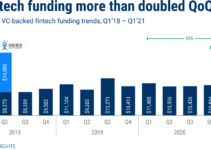You may be forgiven if you think that Central Bank Digital Currencies are the boring cousin of bitcoin. Yet CBDCs made more news this week than the ups and downs of king of crypto—and perhaps because of them.
Bitcoin was designed to address “the risk that fiat currency is debased in the future by excessive supply”—printing money—and “the clunky nature of the modern payments system,” writes Financial Times columnist Gillian Tett in “Central bankers’ crypto experiments should put investors on alert.” Instead, it has largely become an investment asset.
Central banks in nearly 70 countries are working on digital versions of their currencies, according to a recent survey of CBDC development by the Bank of International Settlements, often described as the central bank of central banks. Motives vary, but these initiatives are designed, at least in part, to overcome the monetary limitations of cryptocurrencies. CBDCs provide increased control over a national currency and make payments smoother, especially internationally.
“Convenient and inexpensive access to other currencies for remittances, travel, and trade could give users more incentives to adopt a CBDC,” states a new BIS report on CBDCs and international payments. For his part, the head of innovation as the BIS told Bloomberg that bitcoin fails the tests of a currency. It might work as an investment but its volatility makes it less desirable as a means of exchange, a key function of a currency, according to Benoît Cœuré. (This is not a new sentiment or assessment. See “Government digital currencies aren’t efficient enough for prime time.”)
The Federal Reserve may have that in mind with its CBDC experiment. “One of the three key principles highlighted in the report is that a CBDC needs to coexist with cash and other types of money in a flexible and innovative payment system,” said Federal Reserve Chair Jerome Powell. Powell discussed the report at a BIS innovation conference last week and reported on the progress of a digital dollar being developed by the Boston Fed and MIT.
Tellingly, the BIS’s recognition of consumer choice and Powell’s statement that CBDCs would coexist with other forms of payment are echoed in a statement from the People’s Bank of China, arguably the leader in national digital currencies. The PBOC is readying its digital RMB for launch, reports suggest that it was designed to displace China’s app-based payments and challenge the U.S. dollar in international trade.
This week the PBOC announced that its digital yuan will coexist with and serve as a backstop to WeChat Pay and Alipay, Bloomberg reports. It will also guard against the “dollarization” of digital currency while putting a government check on bitcoin. That’s a CBDC in a nutshell.
For a report on central bank digital currency development and comments on cryptocurrency as money, see “Crypto Terms,” our coverage of the 2018 edition of Money20/20 Asia.
